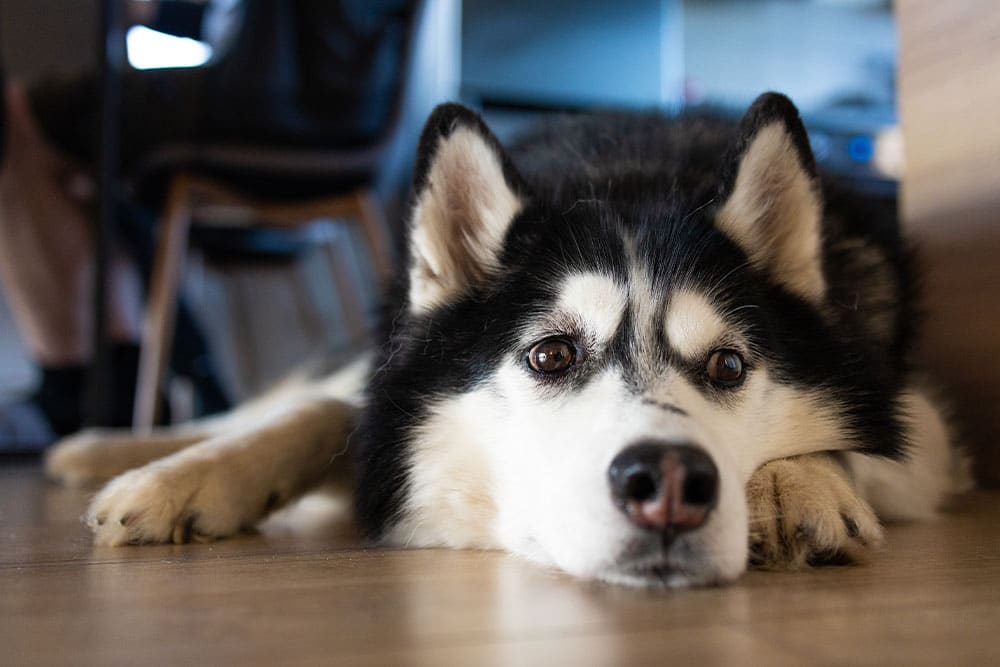As pets age, even subtle changes in the weather can begin to take a visible toll on their comfort, health, and mobility.
At Mobile Cat & Dog Vet, we know how hard it is to watch your senior pet struggle—especially when you’re doing your best to create a safe, loving environment at home. Whether your companion is entering their golden years or receiving hospice care, seasonal shifts can bring both physical challenges and emotional strain. Our goal is to help you navigate these changes with gentleness, clarity, and compassionate support.
Why Weather Affects Senior Pets Differently
Increased Vulnerability with Age
Older pets simply don’t bounce back the way they used to. Their internal temperature regulation becomes less efficient, their joints ache more in cold weather, and conditions like heart disease, arthritis, or respiratory illness can be exacerbated by heat, cold, or humidity.
Even changes that seem mild to us—a slightly warmer afternoon or a chilly draft near the floor—can significantly affect your pet’s comfort level, especially if they spend more time resting or have limited mobility.
When Comfort Becomes the Priority
For pets in hospice or palliative care, the goal isn’t fixing—it’s soothing. The priority becomes minimizing discomfort, managing symptoms, and making every day feel as peaceful as possible. That might mean modifying routines, adjusting the home setup, or simply recognizing when your pet is telling you, “This isn’t working for me today.” These small acts of attentiveness are a meaningful form of love.
How to Recognize Seasonal Discomfort
Signs to Watch For
Your pet may not be able to tell you what’s wrong, but they often show you:
- In warmer months: Excessive panting, drooling, restlessness, pacing, or changes in sleep patterns
- In colder weather: Shivering, slow or stiff movements, hunching, hiding, or reluctance to get up
- In high humidity: Labored breathing, coughing, wheezing, or worsening skin irritation
You may also notice subtle behavior changes—like clinginess, irritability, or refusing food—that signal they’re not feeling quite right.
What’s “Normal” vs. What’s Not?
Some seasonal changes are expected, but when your pet seems unusually anxious, fatigued, or in pain, it’s worth checking in. In hospice care especially, small declines can happen quickly—so staying ahead of them matters.
When Symptoms Are Left Unchecked
Without early intervention, seasonal stress can lead to more serious complications:
- Heat stress may escalate into heatstroke—even indoors, especially in pets with heart disease or limited mobility
- Cold exposure can intensify joint pain and stiffness, leading to less movement and increased anxiety
- Humidity can make it harder to breathe, especially for pets with tracheal collapse, asthma, or bronchitis
In senior pets already managing complex conditions, even mild environmental stress can tip the scales. That’s why thoughtful, proactive care makes such a difference.
What You Can Do at Home
Comfort-First Adjustments
These at-home tweaks can create a safer, more soothing space:
- Soft, orthopedic bedding in warm, draft-free areas
- Non-slip rugs or mats to help with mobility on hardwood or tile
- Warming wraps or heated pads (vet-approved) for colder days
- Humidity control through dehumidifiers or A/C to support breathing
- Frozen broth cubes or gentle hydration treats for warmer days
- Cooling pads or fans in summer months
- Low-stimulation enrichment (snuffle mats, gentle scent games) to keep minds engaged when outdoor time is limited
We’re happy to suggest options based on your pet’s mobility, medical needs, and temperament.
Preparing for Veterinary Support
Whether we’re seeing your pet for routine wellness or in-home hospice care, sharing clear observations helps us tailor our guidance to your pet’s daily reality.
Helpful Info to Share
- A brief log of any recent changes (e.g., appetite, mobility, breathing)
- Photos or videos of unusual behavior or symptoms
- Notes on what seems to help—or worsen—your pet’s comfort
- Your personal concerns or questions, even if they feel small
Sometimes a small insight from your daily routine can lead to meaningful relief.

FAQs
Can weather changes affect my pet’s mood or appetite?
Yes. Like people, pets can become more withdrawn, irritable, or sleepy during extreme heat or cold. These signs can sometimes be mistaken for “slowing down” but are often treatable with comfort adjustments.
Is it okay to skip walks during extreme heat or cold?
Yes. For pets in hospice or with mobility issues, walks are not a must—especially if they seem more tiring than joyful. Prioritize indoor bonding, enrichment, or just quiet time together.
Are some pets more sensitive than others?
Definitely. Pets with short muzzles (like bulldogs or Persians), thin coats, or chronic health issues are more vulnerable. And pets with cognitive decline may not react appropriately to cold or heat, putting them at even greater risk.
We’re Here to Help You Care at Home
At Mobile Cat & Dog Vet, we’ve had the honor of helping families support their beloved senior pets through every season—both literally and figuratively. We know how deeply you love your companion, and we’re here to help make each day more comfortable and connected.
If you’re unsure about how the weather might be affecting your pet—or just want to check in—reach out to us or request a visit. Together, we’ll make sure your pet stays safe, soothed, and surrounded by love—right where they feel most at home.








Leave A Comment